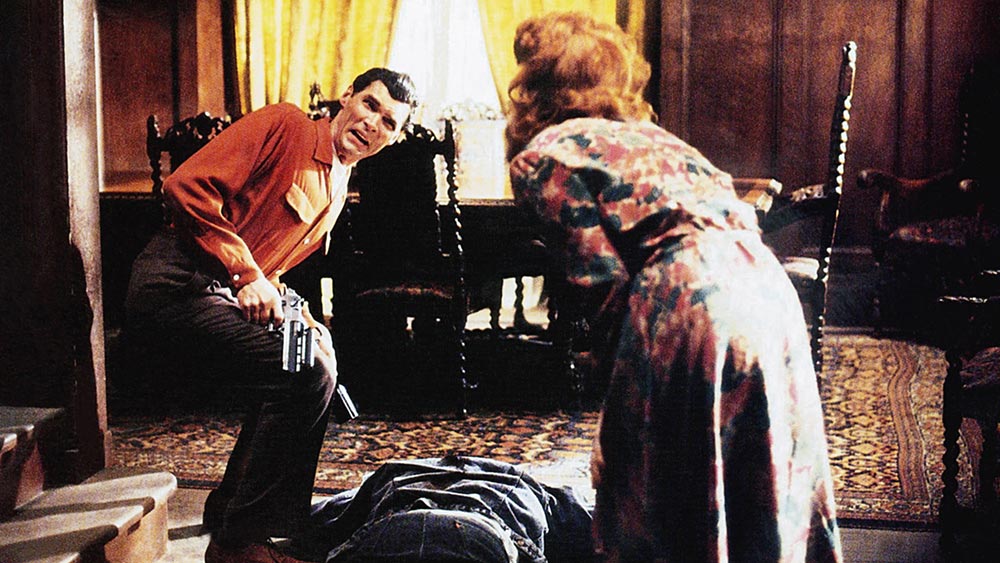Wes Craven’s kooky horror satire The People Under the Stairs (1991) often slips between the cracks of his blockbuster hits, and yet, ironically, it’s one of his most deranged and memorable creations. Widely regarded as the architect of late 20th Century Horror, Craven was responsible for a number of genre-defining franchises, including Scream, The Last House on The Left, A Nightmare On Elm Street, and The Hills Have Eyes. Whilst many of these cult classics used the scaffolding of American landscapes and lifestyle, none were as overtly political, nor confrontational, as The People Under The Stairs.
Following the end of the Reagan years, this offbeat gothic horror film pertinently reflected on an increasingly gentrified L.A., the drying up of public services, and the United States’ slow descent into necrocapitalism. It follows “Fool” (Brandon Adams), a young boy trying to find money for his mother’s cancer treatment, while the threat of eviction from their home looms over them. In a desperate situation, and with some additional pressure from neighborhood friend Leroy (Ving Rhames), the duo decide to rob their landlord’s house, not realizing that few visitors have historically ever made it out.
Before they can find the money, they’re stuck playing cat-and-mouse with “Mommy” and “Daddy,” the powdery and stiff couple that own half the properties in the neighborhood and serve as a kind of Ronald and Nancy Reagan simulacrum, (they’re played by Twin Peaks’s Ed and Nadine, Everett McGill and Wendy Robie). We quickly find out that the two aren’t just evil by way of wealth hoarding, but are actually incestuous, cannibalistic siblings who occasionally moonlight as gimps and keep their daughter locked inside the house, along with Roach, a man missing a tongue who scratches around the walls, and a hoard of emaciated, zombified locals locked in their basement.
What ensues is a comedic take on a chilling premise; a one-night adventure through an ornate, wood paneled mansion full of trapdoors, shaftways, and locked windows that serve as the film’s cobwebbed obstacle course. The strength of The People Under The Stairs lies in its commitment to genre as a vehicle for political allegory. Its story is exactly the relevant, issue-driven narrative that we now expect from an “elevated horror” rollout, but executed within broad and largely satirical ‘90s setpieces that prioritize thrills over messaging. A fusion of action, comedy, and horror tropes are used to achieve this, landing on a tone that balances blaxploitation sentiments—“So that’s why there’s no money in the ghetto,” says Fool at the movie’s climax—with an acknowledgement of the true horrors at the heart of contemporary American life.
The People Under the Stairs screens tonight, July 15, at Nitehawk Prospect Park as part of the series “Kids vs. Evil.”



